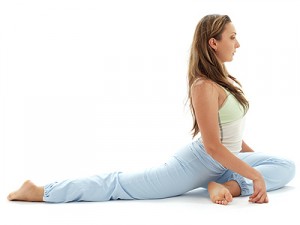
You need to be choosy about your pregnancy exercises and the routine that you should follow in pregnancy.
Be clear about the kind of exercises suitable for you in the first trimester of pregnancy and how safe they are for you to continue and whether you can continue them till the end of your term. Your doctor should tell you about the kind of exercises that you can do or not do during pregnancy and the precautions that you need to take.
Pregnancy tips for exercise
1. Walking It is one of the safest exercises that you can do during pregnancy. It is the lowest in impact workout and provides a very good cardio exercise. The chances of injury are very little as there is very little impact on joints and ligaments. Moreover, this is one of the forms of exercise that can be continued till the very last of pregnancy. Make sure that you use supportive shoes that help to prevent overheating and keeps you hydrated.
2. Swimming It is considered to be the best of exercise and this holds true even during pregnancy. You can be free from the various jerks and harmful impact on your body that is harmful for you and the baby. There are no chances of overheating and very little risk of jerks on your joints and bones.

If you suffer from lower back pain, you may have decided that it’s just a part of getting old.
However, this isn’t true. If you look after your body you’ll likely be able to enjoy a long and active life.
You don’t have to deal with back pain every time that you do a little yard work or rearrange your furniture. You may have read about using natural back pain remedies to heal your back. Sometimes these natural cures include exercise, like yoga. The practice of yoga has many moves that can be beneficial in preventing and relieving lower back pain.
Common advice given to people suffering from back pain is that the abdominal and back muscles simply need to be strengthened. Although this is likely true, you should not forget that these muscles also need to be lengthened. Additionally, exercise and stretching should not only focus on the muscles in the center of the back and middle of the stomach, but also on the muscles on the sides of the trunk as well. Yoga will not only strengthen all of these muscles, but lengthen them too. These stronger, longer muscles will protect the back from injury.
More importantly Yoga is good for back pain because it corrects muscle imbalances in the body. If you have exercised the abdominal muscles but neglected the back muscles, poor posture and weak muscles will result. This poor posture will put stress on your body and set you up for repeated back injuries.
If you are susceptible to back injuries, you may be tempted to work only on the abdominal and back muscles. Although it is good to be strong in the core muscles of the body, weak leg muscles and pelvic muscles can also contribute to poor posture, causing stress on the pelvis and lower back.

Recent medical reports say that out of 1,500 children, about 5-20, both diagnosed and undiagnosed, have celiac disease (CD). Symptoms of the disease such as weight loss, bloating, diarrhea, vomiting, delayed growth and development usually appear with the introduction of gluten to the childs diet.
Breastfed children are found to have delayed onset of celiac disease simply because of the gradual introduction of gluten to their diet.
The fact that some kids have celiac disease presents a challenge to many parents and caregivers when it comes to helping them follow a strict gluten free diet. How can they help the child cope with the reality that they have to eat a different kind of food from what their schoolmates and friends eat? How about when they eat out in restaurants or attend their friends party or go out camping?
The parents have a great responsibility in helping their kids cope with their celiac disease. Some of the things that they need to do include:
1.Parents should learn all they can about celiac disease including the Gluten Free Diet and help their children understand their condition and what are the necessary to-dos to avoid complications. They may have to consult with the childs respective pediatrician and nutritionist.
2.Parents should make sure that their children are only served Gluten Free Snacks and meals. They have the option to prepare gluten free food snacks and meals from scratch at home or they can buy them from the supermarket, grocery store or on online gluten free stores.


